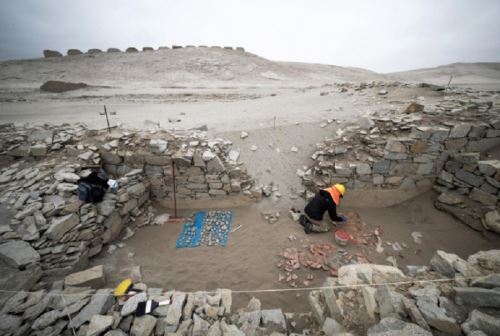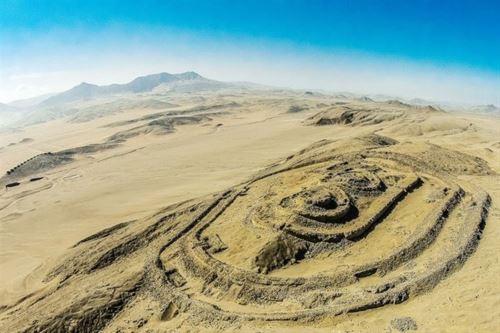16:00 | Casma Valley (Ancash region), Sep. 1.
The
Ministry of Culture, through the Executing Unit 010 Chankillo, announced days ago the discovery of a fragmented sculptural vessel depicting warriors in combat at the entrance to the Solar Observatory within the Chankillo Archaeoastronomical Complex in Casma Valley, Ancash region.
The piece, belonging to the Patazca style, is believed to have been deliberately broken, either as part of a ritual offering or in the context of a conflict event at the site.
Its location, in a space of deep ceremonial value, underscores its symbolic meaning within religious practices associated with the Sun.
Researchers argue that the depiction of warriors is linked to the Chankillo building known as the Fortified Temple, which functioned as the political, military, and ritual center for Chankillo's elites.
This finding confirms that ritual objects not only served a ceremonial purpose but also conveyed messages of identity and authority.
The vessel adds to other evidence connecting solar ceremonies —organized around astronomical observations from Chankillo's Thirteen Towers— with the rise of a warrior elite that consolidated its power through ritual, control of the solar calendar, and military strength.

Thus, the discovery reinforces the interpretation that Chankillo, in addition to being the oldest solar observatory in the Americas, also served as a setting for combat and the legitimization of elite power.
The
Ministry of Culture is expected to continue excavations in different areas of the complex to further reveal key aspects of the civilization that flourished in Ancash over 2,300 years ago.
About Chankillo
It is a ceremonial center recognized by UNESCO as a World Heritage Site in 2021.
Its thirteen towers constitute the oldest solar observatory in the Americas and the only complete solar horizon calendar of the ancient world.
The complex also includes an imposing 300-meter-long fortification, reinterpreted as the Fortified Temple.

(END) NDP/LZD/FGM/JMP/MVB
Published: 9/1/2025